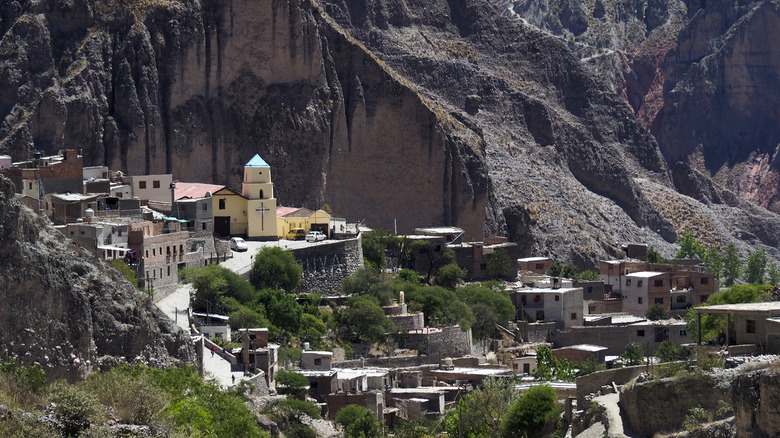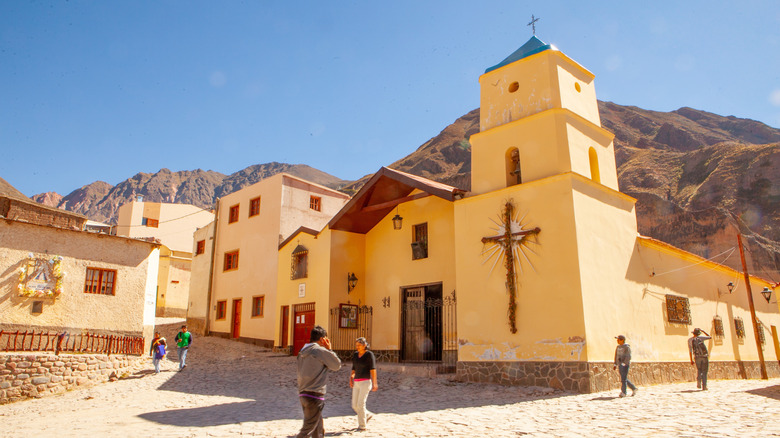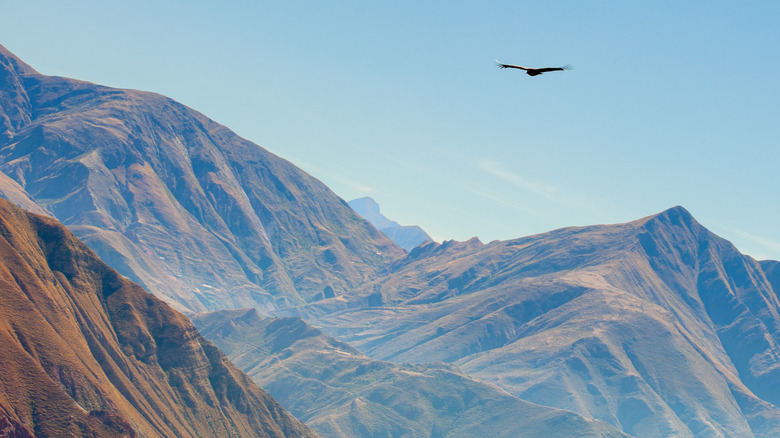The Stunning Desert Town In Argentina Known For Its Mountainous Beauty
Argentina's Salta region is famed for numerous reasons. Tucked between the Andes Mountains and the Salado River, Salta was once the battleground for Argentina's War of Independence in 1813. Today, it's a popular tourist destination in South America due to its thermal springs and beautiful nature. Historically, Salta has been a great archaeological site of discovery where Incan and pre-Colombian artifacts have been uncovered.
Of all the towns in this region, Iruya particularly stands out. For the most part, this is a destination for those who like to stray off the beaten track. Hard to reach and one of the last towns in the north of the country before reaching the Bolivian border, Iruya — home to the Indigenous Cachis — has preserved much of its original culture despite having been colonized by the Spanish. There are still examples of architecture from when Iruya was founded in 1753, making the town feel as though it has stopped in time. Iruya offers trekkers a real taste of the desert country, with incredible views of the Andean Plateau and otherworldly Argentina landscapes.
Explore the heart of Indigenous Argentina
Iruya is tricky to reach but can be accessed from San Salvador de Jujuy or via the road from Humahuaca, a bumpy, twisting mountainside drive that is largely unpaved and lasts approximately 3-4 hours. Renting a 4x4 to get there is recommended. While this may seem long and daunting, you'll be accompanied by spectacular views of the Colazulí and Milmahuasi rivers throughout your journey and see cattle, sheep, goats, and llamas along the way. Undoubtedly one of Argentina's most beautiful and least-visited villages, with a population of around 1,500 inhabitants, Iruya shows the real roots of Indigenous Argentina, untouched by the hands of globalization.
Iruya's cobblestone streets, houses made from adobe, and traditional decor give this town a strong identity. The region has a subtropical climate that gets a lot of rain between December and March, so visit in late spring/summer to avoid bad weather. Due to the high altitude of the village (9,120 feet above sea level), the weather is prone to temperature changes, so you should be cautious of what you pack for Argentina and of course bring a sunhat and sunscreen, as the sun can be quite potent at these heights! Worthwhile places to visit in the town include Plaza la Tablada, the town square and epicenter of local cultural festivities. Meanwhile, Museo Popular de Iruya is a brilliant way to learn about Iruya's history and traditions and is filled with local artifacts.
Discover the best things to do in Iruya
Once in Iruya, there is plenty to do. This isolated but tranquil village has various miradores, or lookout points, where you can overlook the town and survey the surrounding mountains. Notable walks are Mirador del Cruz and Mirador del Cóndor. You'll find the best sunset views at Mirador del Cruz, which is also the best place to admire Iruya at night. However, Iruya's most famed attraction is probably Mirador del Cóndor. Named after the huge condors that take to the skies around the mountains, this attraction is worth visiting in the early afternoon to catch spectacular sights. The hike to Mirador El Condor is roughly 1-2 hours roundtrip — a steep uphill journey, but worth the effort. From here, you can also enjoy views of the town and appreciate the Argentinian architectural design of buildings like Iglesia Nuestra Senora del Rosario y San Roque (Our Lady of the Rosary and San Roque Church).
Hikers will enjoy the 3-mile trek to San Isidro de Iruya, a smaller, neighboring Indigenous village. There are also the somewhat nearby Pucara de Tilcara ruins, an archeological world heritage site that is believed to date back to the 10th century A.D. Don't leave Iruya without trying llama, an Andean regional specialty and delicacy of the area's Indigenous cultures. Comedor Los Cachis is a local favorite and offers llama with quinoa and goat stew.


